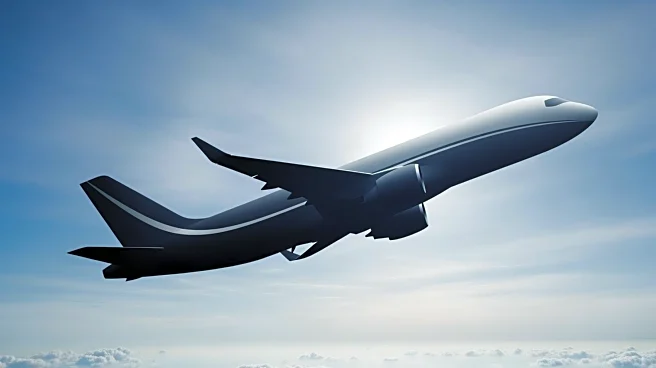What's Happening?
Hawaiian Airlines is set to resume its seasonal service between Honolulu Inouye International Airport (HNL) and Auckland Airport (AKL) starting next month. This move comes as part of a broader reevaluation
of its transpacific network following its merger with Alaska Airlines in 2024. The service will operate three times weekly from November 16 to April 20, 2026, using an Airbus A330-200. Hawaiian Airlines will compete with Air New Zealand, which offers year-round service on the same route. Hawaiian will provide 1,668 two-way weekly seats, slightly fewer than Air New Zealand's 1,746 seats. Additionally, Hawaiian Airlines plans to discontinue its service from HNL to Fukuoka, Japan, and Seoul Incheon Airport (ICN) in November, markets it has served for 14 years.
Why It's Important?
The resumption of the Auckland service by Hawaiian Airlines is significant as it marks a strategic shift in its transpacific operations post-merger with Alaska Airlines. This decision reflects the airline's efforts to optimize its network and compete effectively in the transpacific market. The discontinuation of services to Fukuoka and Seoul indicates a realignment of resources, potentially enhancing Alaska Airlines' long-haul capabilities from Seattle-Tacoma International Airport. This move could impact passenger choices and market dynamics, especially for travelers between the U.S. and Asia-Pacific regions. The competitive landscape on the Honolulu-Auckland route will intensify, offering passengers more options and potentially influencing pricing and service quality.
What's Next?
Hawaiian Airlines' network changes may lead to further adjustments in its route offerings as it continues to integrate operations with Alaska Airlines. The focus on Seattle as a long-haul hub suggests potential expansion of services to other international destinations. Stakeholders, including passengers and competing airlines, will likely monitor these developments closely. The airline's strategic decisions could prompt responses from competitors, possibly leading to new partnerships or service enhancements. Additionally, the impact on tourism and business travel between the U.S. and Asia-Pacific regions will be an area of interest for industry analysts.
Beyond the Headlines
The merger between Hawaiian Airlines and Alaska Airlines represents a significant shift in the U.S. aviation landscape, with potential long-term implications for airline competition and route development. The integration of Hawaiian's widebody aircraft into Alaska's operations could lead to increased connectivity and new market opportunities. This development may also influence regulatory considerations and industry standards, as airlines seek to balance expansion with sustainability and customer satisfaction.












